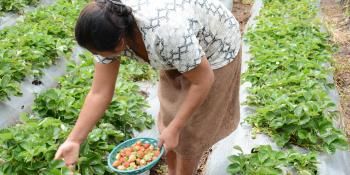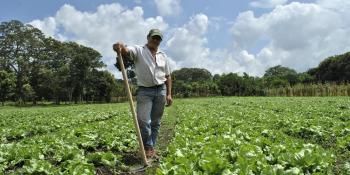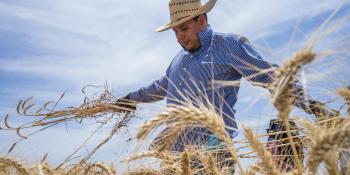Keys to climate-friendly coffee production

The production of Arabica coffee has been particularly hard hit by climate change, and so have the many smallholder farmers in Latin America who directly depend on revenues from coffee to sustain their livelihoods.
But Arabica production has also contributed its share to greenhouse gas emissions and to climate change, especially because large areas of coffee in Mexico, Central America, Colombia, and the Caribbean have been converted from agroforests – i.e., systems in which forest and/or other tree species, like fruits, are grown alongside coffee plants – into lightly shaded or full-sun coffee - i.e., systems with few or no trees, in which coffee plants are exposed to the sun to boost yields.
The thing is, trees sequester carbon. So the more trees, the more carbon pulled out of the atmosphere, and the better for the climate. Introducing trees in coffee production systems - as is the case with traditional or commercial polyculture systems – therefore reduces the climate impact of coffee production. Besides, the harvested wood can replace fossil fuels for cooking and heating or other more energy-intensive construction materials, a practice that is also climate friendly.
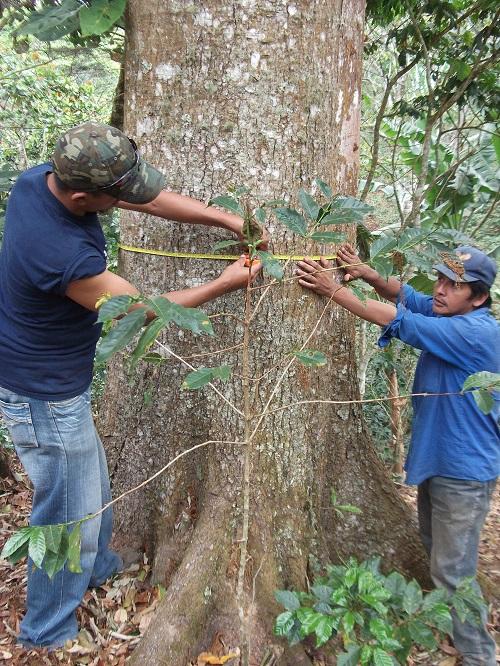
Coffee farmers helping to collect data for the study
Another dimension of coffee production’s impact on climate is the carbon footprint of coffee itself. This is a measure of the carbon emitted during the production, processing, and transportation of 1 kilogram of parchment coffee. It is in flux and quantifies the carbon flows between the production system and the environment, which is different and independent from the carbon stocks in the surrounding vegetation of the production systems.
A recent study by Van Rikxoort (UTZ Certified), Schroth (Rainforest Alliance), Läderach, and Rodriguez-Sanchez (CIAT), published in Agronomy for Sustainable Development, shows that the carbon footprint of coffee depends on three main elements: (1) emissions from soils and the production and application of fertilizers, (2) emissions from pruning and crop residues decomposing on the ground, and especially (3) emissions from parchment coffee fermentation and untreated wastewater disposal.
Due to the demands for high-quality Arabica in Latin America the coffee must undergo fully washed coffee processing, which involves the fermentation of coffee parchment in large tanks for up to 36 hours and the disposal of (often untreated) wastewater into nearby waterways, causing significant methane emissions. In well designed wastewater treatment systems, this methane can be harvested and used as biogas for cooking or to run the de-pulping machines, for example. Dry processing, on the other hand, avoids the washing process and related methane emissions altogether.
Thus, making coffee production both climate smart and climate friendly entails:
(1) introducing trees in plantations,
(2) optimizing fertilizer production and use, and
(3) reducing emissions from fermentation and wastewater production.
Van Rikxoort et al. found that commercial polyculture systems, in which leguminous trees (which, by the way, also fix nitrogen) and fruit trees are grown alongside coffee plants, sequester substantial amounts of carbon compared to shaded and unshaded monocultures, and also make relatively moderate use of fertilizers.
It seems commercial polycultures are among the most promising ways of producing coffee with a low carbon footprint, while also reducing the vulnerability to climate and market risks through diversification, as these systems offer coffee farmers a whole range of additional cash and subsistence crops.
Read the peer-reviewed article: Carbon footprints and carbon stocks reveal climate-friendly coffee production by Henk van Rikxoort (UTZ Certified), Götz Schroth (Rainforest Alliance), Peter Läderach and Beatriz Rodríguez-Sánchez (CIAT)
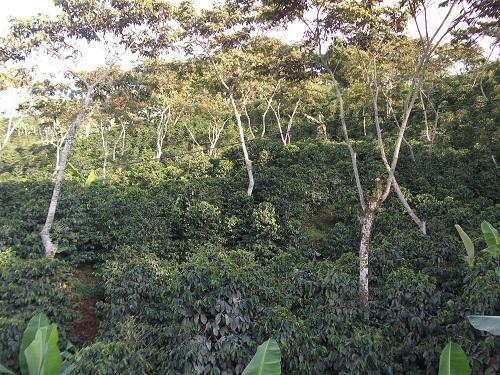
Shaded monoculture coffee in Colombia

